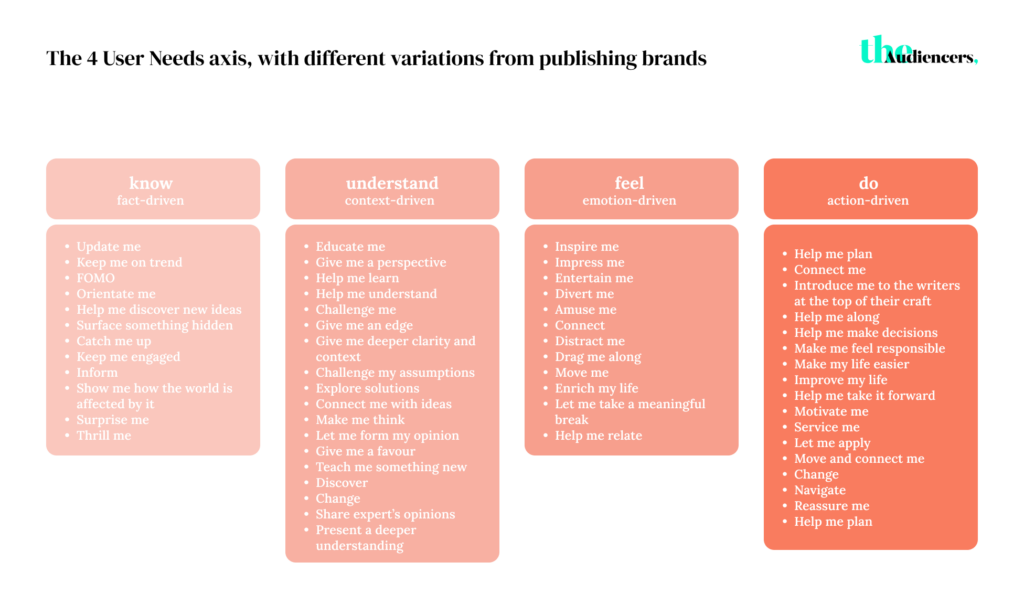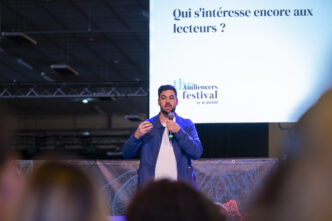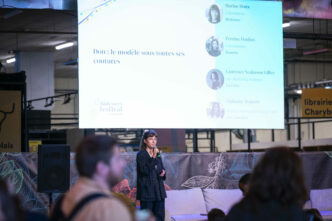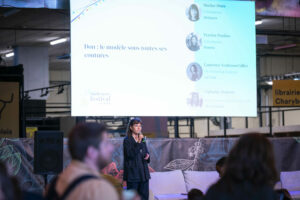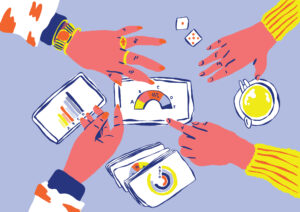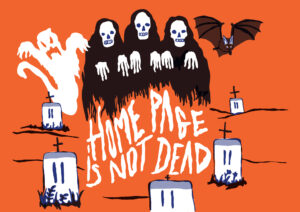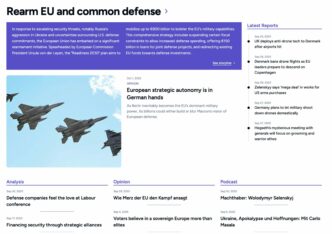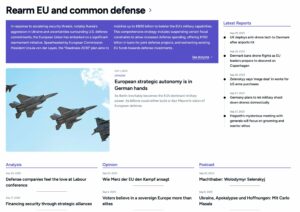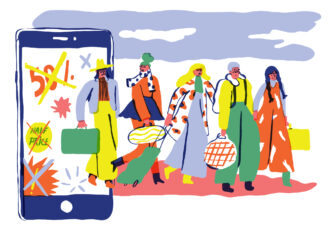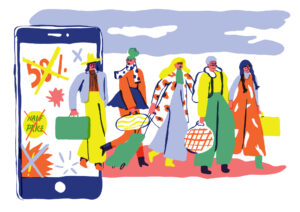
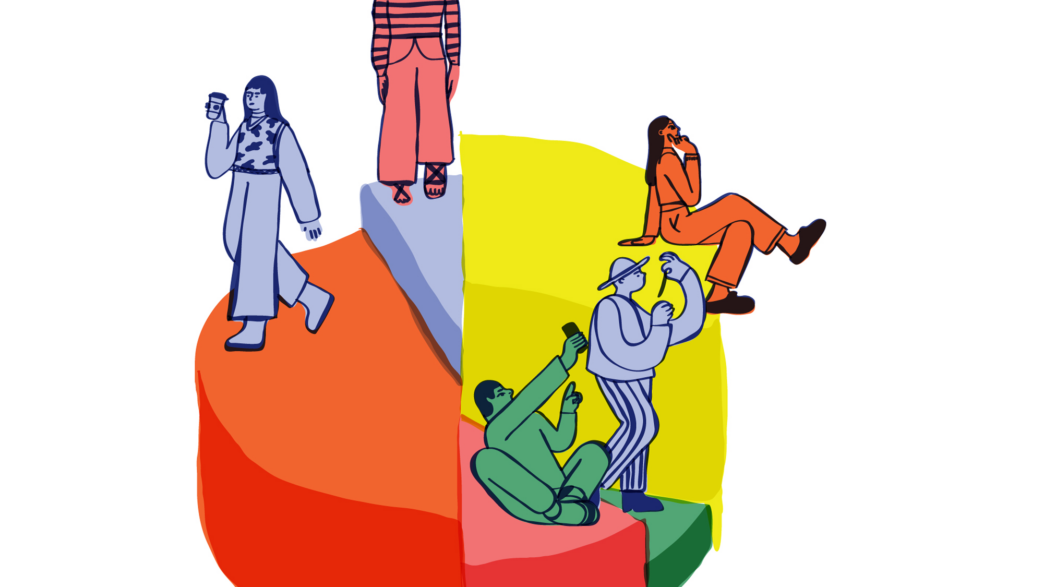
From the first model popularized by Dmitry Shishkin at the BBC in 2017, to hundreds of implementations across the media industry today, the User Needs Model has had a huge impact on journalism and ensuring content better meets the needs of users.
To support you in implementing your own User Needs Model, this article benchmarks some of the versions being used by media organizations, many of whom have adapted a user need or two to their unique content and audience.
Whilst you're here, if you're looking for more guidance on getting started with user needs, sign up to Khalil A. Cassimally's 6-week email course.
The original User Needs
Shishkin’s 2017 User Needs Model, implemented first at the BBC, was made up of 6 categories:
- Update me
- Keep me on trend
- Inspire me
- Divert me
- Educate me
- Give me perspective
More recently, together with Smartocto, Shishkin developed this into the User Needs Model 2.0, a more comprehensive and practical version.
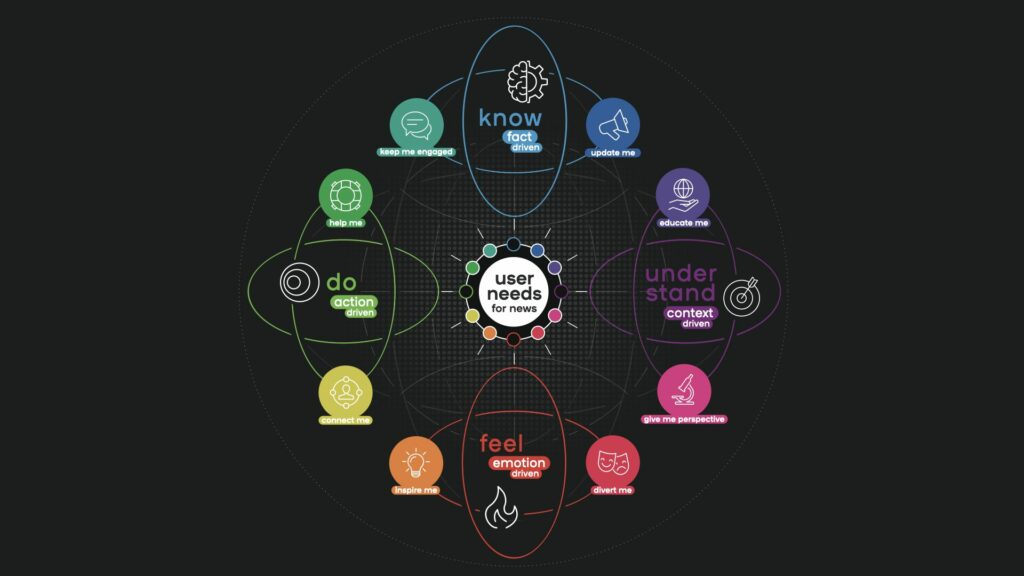
This updated version is built around the 4 states of knowing, doing, feeling and understanding, each with 2 basic needs.
- Know – keep me engaged and update me
- Understand – educate me and give me perspective
- Feel – inspire me and divert me
- Do – connect me and help me
Should you adapt the User Needs Model to your audience and content?
As Dmitry Shishkin puts it, user needs models always come from your audience, and given that each publishers’ audience is unique, this suggests the model should be adapted to ensure content matches and satisfies your user’s needs, not the other way round.
‘I always recommend starting by asking yourself why you exist in the market. Effectively, your mission statement should reflect the user needs you declare to satisfy. So it’s ok to be only about Give me perspective and Help me, if your newsroom is not set up to provide the best quality Update me or Keep me Engaged stories.
Conversely, if Update me is something you do anyway, and do it well, concentrate on making sure that your ‘slow coverage’ aligns with user needs as effectively as possible. It’s a typical Pareto principle, if 80% of your content is Update me, make sure that the other 20% perform as best as they can and this is where user needs help enormously. Effectively, anything that you pre-plan must satisfy a user need, other than Update me.
Ultimately, any model, irrespective of how exactly you name each user needs, will represent the four axis of ‘fact-context-emotion-action’ structure in some shape of form. You might have 3 specific needs in one category and only one in another, but you should have all these axes represented. User-centricity is paramount.“
